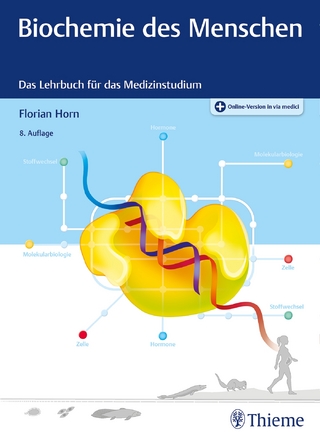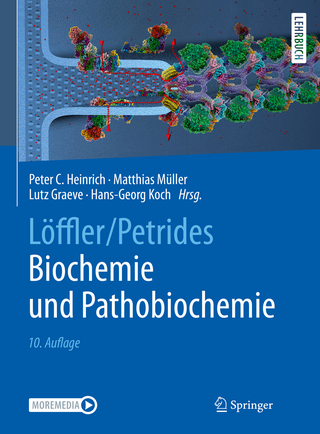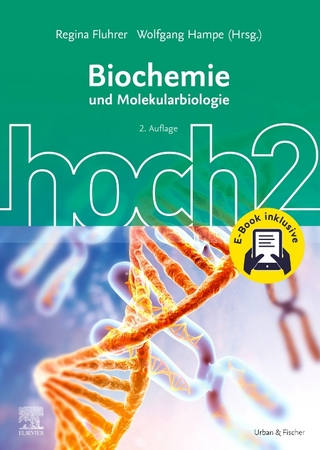
Human Metabolism
Functional Diversity and Integration
Seiten
1999
Longman (Verlag)
978-0-582-02655-1 (ISBN)
Longman (Verlag)
978-0-582-02655-1 (ISBN)
- Titel ist leider vergriffen;
keine Neuauflage - Artikel merken
The principle aim of this book is to explain how the metabolism supports physiological processes in the human body. It is important to have this information in order to understand how human health is affected by diet, exercise, disease, and trauma.
The study of metabolism is essential to an understanding of how diet and lifestyle affect our health. This clear introduction to human metabolism provides an overview of the relationship between metabolism and physiological processes in the human body and its role in health and disease.
Beginning with a review of basic biochemistry in a human context, the text goes on to explore important metabolic variations between tissues, often ignored in introductory courses; this provides a strong basis from which students can develop an understanding of metabolic integration in the whole body.
Part 1 reviews the major features of human metabolism and explains how metabolic pathways support basic cell functions. Part 2 describes the functions of the liver, adipose tissue, muscle, pancreas, intestine, the central nervous system, the blood and the kidneys and how these are supported by metabolism. Part 3 details the integration and control of metabolism in the whole body, and illustrates the ways in which this balance is disturbed by changes such as exercise, trauma, starvation and disease.
This book will be of particular interest to advanced undergraduates studying metabolism and physiological biochemistry modules within degrees in Biochemistry, Biology, Biomedical Science, Physiology, and Medicine. It will also be a valuable reference guide for those in the pharmaceutical industry.
The study of metabolism is essential to an understanding of how diet and lifestyle affect our health. This clear introduction to human metabolism provides an overview of the relationship between metabolism and physiological processes in the human body and its role in health and disease.
Beginning with a review of basic biochemistry in a human context, the text goes on to explore important metabolic variations between tissues, often ignored in introductory courses; this provides a strong basis from which students can develop an understanding of metabolic integration in the whole body.
Part 1 reviews the major features of human metabolism and explains how metabolic pathways support basic cell functions. Part 2 describes the functions of the liver, adipose tissue, muscle, pancreas, intestine, the central nervous system, the blood and the kidneys and how these are supported by metabolism. Part 3 details the integration and control of metabolism in the whole body, and illustrates the ways in which this balance is disturbed by changes such as exercise, trauma, starvation and disease.
This book will be of particular interest to advanced undergraduates studying metabolism and physiological biochemistry modules within degrees in Biochemistry, Biology, Biomedical Science, Physiology, and Medicine. It will also be a valuable reference guide for those in the pharmaceutical industry.
I. GENERAL FEATURES OF METABOLISM.
1. An Overview of Metabolism
2. Carbohydrate Metabolism
3. Lipid Metabolism
4. Nitrogen Metabolism
II. DIFFERENT ORGANS HAVE SPECIALIZED AREAS OF METABOLISM. 5. What Do Different Organs Contribute to the Body's Metabolism
6. The Liver
7. Adipose Tissue
8. Muscles
9. The Pancreas
10. Intestinal Metabolism and nutrient Absorption
11. Metabolism and the Central Nervous System
12. Blood
13. The Kidneys
III. INTEGRATION AND CONTROL OF TISSUE METABOLISM.
14. Hoe the Integration and Control of Metabolism Can be Altered
15. The Influence of Starvation on Tissue Metabolism
16. How Does Exercise Alter the Metabolic Balance?
| Erscheint lt. Verlag | 5.3.1999 |
|---|---|
| Verlagsort | Harlow |
| Sprache | englisch |
| Maße | 220 x 276 mm |
| Gewicht | 1120 g |
| Themenwelt | Studium ► 1. Studienabschnitt (Vorklinik) ► Biochemie / Molekularbiologie |
| Studium ► 1. Studienabschnitt (Vorklinik) ► Histologie / Embryologie | |
| ISBN-10 | 0-582-02655-5 / 0582026555 |
| ISBN-13 | 978-0-582-02655-1 / 9780582026551 |
| Zustand | Neuware |
| Haben Sie eine Frage zum Produkt? |
Mehr entdecken
aus dem Bereich
aus dem Bereich


